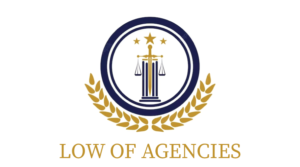When families lose someone because of another’s negligence, grief mixes with unanswered questions. What happened? Could it have been prevented? Where does responsibility truly lie? Evidence answers those questions with clarity. It gives weight to claims, creates timelines, and shows jurors what really unfolded. A wrongful death attorney depends on evidence not just to argue but to prove the truth.
Here are 10 types of evidence that strengthen wrongful death cases.
1. Medical Records Build the Foundation
When attorneys begin building a wrongful death case, they often start with medical records. These records map out a detailed account of every step taken in the treatment, on top of the charts and typed reports. Doctor notes, test results, medication lists, and surgical details are also considered as they reveal what was done and when. When patterns of mistakes or gaps in care show up, these files often make the connection clear.
2. Witness Statements Provide Clarity
What someone saw or heard at the scene often adds a human layer that papers and reports cannot. Witnesses can recall tone of voice, behavior, or even the conditions of the room when things went wrong. Their accounts sometimes reveal red flags overlooked elsewhere. For jurors, listening to a real person describe events makes negligence easier to understand than reading a stack of documents.
3. Expert Testimony Makes Complicated Topics Clear
Some cases hinge on details too technical for the average person to untangle alone. That is where experts step in. A surgeon can explain whether accepted standards were followed, while an engineer may point out a mechanical flaw in a vehicle or product. Their role is to bridge the gap, taking specialized knowledge and making it understandable enough to connect negligence directly to the fatal outcome.
4. Accident Reports Document Early Findings
Accident reports, whether drafted by police, workplace supervisors, or emergency crews, provide critical first impressions of what happened. These documents may include diagrams, site descriptions, or witness information gathered within hours of the event. While not always complete, they serve as reliable starting points. Attorneys build on them to investigate further and uncover overlooked details.
5. Photographs and Videos Capture Proof
Visual evidence cuts through debate in ways words sometimes cannot. Photographs of vehicles, surveillance footage, or even cellphone videos capture moments as they happened. They preserve details like road conditions, equipment failures, or hazardous spaces. For jurors, seeing a clear image or watching a recording often carries more weight than written testimony or secondhand descriptions.
6. Financial Records Show the Lasting Impact
Beyond proving responsibility, wrongful death cases must also show the effect of the loss on surviving family members. Pay stubs, tax returns, and job histories illustrate the income no longer provided. These numbers, while practical, carry emotional weight too. They show how stability, education, or even retirement plans are disrupted when a primary provider is gone.
7. Autopsy Reports Confirm the Cause of Death
An autopsy offers a scientific explanation for why death occurred, leaving little room for speculation. Pathologists examine injuries, perform toxicology screenings, and identify internal damage, all of which confirm the true cause. This clarity rules out alternative explanations and ties the passing directly to the negligent act. Autopsy reports often serve as pivotal turning points in cases.
8. Product Testing Reveals Dangerous Defects
When faulty equipment, consumer products, or even vehicle parts are involved, product testing becomes indispensable. Engineers or specialists carefully examine how and why a failure occurred. Their reports may highlight design flaws, manufacturing errors, or improper maintenance. These findings expose dangers that might otherwise stay hidden and firmly establish responsibility for harm caused by defective products.
9. Company and Workplace Records Expose Patterns
Sometimes negligence is not isolated but repeated. Company logs, safety inspection records, or employee complaints can show patterns of ignored risks or policy failures. These internal documents add depth to a case, transforming it from a single mistake into evidence of ongoing disregard for safety. They reveal culture, not just circumstance, making negligence harder to deny.
10. Personal Testimonies Show the Human Side
Numbers and documents speak loudly, but personal stories remind courts of the true loss. Family members and friends describe the love, support, and presence that is gone forever. These accounts do not prove liability directly, yet they provide essential context. They highlight the human cost of negligence, grounding legal proceedings in lived reality and emotion.
Conclusion
Evidence is the thread that ties a wrongful death case together. Medical records map treatment, while witnesses share firsthand accounts. Experts explain complicated issues, and accident reports provide early documentation. Photographs and videos give jurors a visual truth, while financial records demonstrate how families are left struggling.
Autopsies confirm cause, product tests reveal hidden dangers, and workplace files uncover ongoing negligence. Personal testimonies then remind everyone what has really been lost.
A wrongful death attorney weaves these elements into a case built on clarity and proof.

